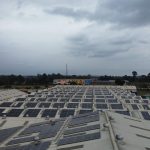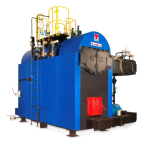Solar energy is one of the most abundant and cleanest sources of energy on Earth. It is the energy that comes from the sun and can be converted into electricity or heat using solar panels or other devices. Solar energy has many benefits for the environment, economy, and society. It can help reduce greenhouse gas emissions, create jobs, lower energy bills, increase energy security, and improve living standards.
According to the International Renewable Energy Agency (IRENA), the global installed capacity of solar photovoltaic (PV) systems reached 714 gigawatts (GW) in 2020, an increase of 14% from 2019. Solar PV accounted for about 3% of the global electricity generation in 2020, and is expected to grow to 14% by 2030 and 24% by 2050. In Kenya, the total installed capacity of solar PV was 241 megawatts (MW) in 2020, representing about 2% of the national electricity mix. The government has set a target of achieving 100% renewable energy by 2030, with solar playing a key role.
In this blog post, we will introduce you to the different types of home solar solutions available, how to choose the best one for your needs, and how to get started with your own home solar project. Whether you want to save money, protect the environment, or become more independent from the grid, there is a home solar solution for you.
Types of Home Solar Solutions
Home solar solutions are systems that use solar panels to generate electricity or heat for your home. There are different types of home solar solutions depending on how they are connected to the grid or other sources of power. Here are some of the most common types:
- Grid-tied systems: These are systems that connect to the utility grid and use net metering or feed-in tariffs to sell excess power back to the grid. Net metering is a policy that allows you to offset your electricity bill by the amount of power you export to the grid. Feed-in tariffs are payments that you receive from the utility company for every kilowatt-hour (kWh) of power you export to the grid. Grid-tied systems are usually cheaper and easier to install than other types of systems, as they do not require batteries or generators. However, they also depend on the availability and reliability of the grid, and may not work during power outages.
- Off-grid systems: These are systems that operate independently from the grid and use batteries or generators to store power for later use. Off-grid systems are ideal for remote areas where grid access is limited or unreliable, or for people who want to be completely self-reliant on their own power supply. Off-grid systems are usually more expensive and complex to install than grid-tied systems, as they require more components and maintenance. However, they also offer more flexibility and control over your power usage and generation.
- Hybrid systems: These are systems that combine grid-tied and off-grid features and use smart inverters to manage power flow between the grid, batteries, generators, and loads. Hybrid systems can switch between grid-tied and off-grid modes depending on the availability and cost of grid power, or based on your preferences and needs. Hybrid systems can offer the best of both worlds: lower costs and higher reliability than off-grid systems, and more independence and backup than grid-tied systems.
- Solar water pumping systems: These are systems that use solar panels to power water pumps for irrigation, livestock, or domestic use. Solar water pumping systems can reduce or eliminate the need for diesel or electric pumps, saving money and emissions. Solar water pumping systems can vary in size and complexity depending on the water demand, source, quality, and distribution. They can be standalone or integrated with other power sources such as batteries or generators.
Each type of home solar solution has its own advantages and disadvantages depending on your situation and goals. Here are some factors to consider when comparing them:
- Cost: The cost of a home solar solution depends on many factors such as the size, quality, efficiency, warranty, installation, maintenance, incentives, and financing options of the system. Generally speaking, grid-tied systems are cheaper than off-grid or hybrid systems because they do not require batteries or generators. However, off-grid or hybrid systems may offer more savings in the long run by reducing or eliminating your dependence on grid power. Solar water pumping systems may have higher upfront costs than conventional pumps but lower operating costs over time.
- Performance: The performance of a home solar solution depends on how well it matches your electricity demand, peak demand, load profile, and site conditions. Generally speaking, grid-tied systems are more efficient and reliable than off-grid or hybrid systems because they do not suffer from power losses or degradation due to batteries or generators. However, off-grid or hybrid systems may offer more flexibility and backup in case of grid failures or fluctuations. Solar water pumping systems may have lower performance than conventional pumps in terms of flow rate, pressure, and head, but they can also operate more consistently and sustainably with solar power.
- Suitability: The suitability of a home solar solution depends on your location, climate, electricity demand, and availability of grid or water sources. Generally speaking, grid-tied systems are more suitable for urban or suburban areas where grid access is reliable and affordable, and where net metering or feed-in tariffs are available. Off-grid or hybrid systems are more suitable for rural or remote areas where grid access is limited or unreliable, or where grid power is expensive or unstable. Solar water pumping systems are more suitable for areas where water sources are abundant but grid power is scarce or costly.
How to Choose the Best Home Solar Solution for Your Needs
Choosing a home solar solution can be a daunting task, as there are many options and factors to consider. Here are some tips and steps to help you make an informed decision:
- Assess your energy needs: The first step is to calculate your current and future electricity consumption, peak demand, and load profile. You can use your past electricity bills, a load calculator, or a solar estimator to estimate these numbers. You should also consider your energy goals and preferences, such as how much you want to save on your electricity bills, how much you want to reduce your carbon footprint, or how much you want to be independent from the grid.
- Evaluate your site conditions: The next step is to measure your roof size, orientation, shading, and structural integrity. You can use a roof calculator, a solar irradiance map, or a site survey to estimate these factors. You should also consider your climate and weather conditions, such as the amount of sunshine, temperature, humidity, and wind in your area.
- Research your local regulations: The third step is to check the zoning, permitting, interconnection, and inspection requirements in your area. You can contact your local authorities, utility company, or solar installer to find out these details. You should also research the incentives and policies that are available in your area, such as tax credits, rebates, grants, loans, net metering, or feed-in tariffs.
- Compare different solar panel kits: The fourth step is to review the features, specifications, warranties, and reviews of various solar panel kits from reputable brands and suppliers. You can use a solar panel comparison tool , a solar panel database , or a solar panel review site to compare different options. You should also consider the quality, efficiency, durability, and aesthetics of the solar panels , as well as the compatibility and performance of the other components such as inverters , batteries , generators , or pumps .
- Consult a professional: The final step is to get a free quote , design , and installation advice from a qualified solar installer or contractor . You can use a solar marketplace , a solar directory , or a solar referral service to find and compare different solar installers in your area. You should also check the credentials , experience , reputation , and reviews of the solar installers before hiring them.
Spenomatic Home Solar Solutions
Home solar solutions are a great way to harness the power of solar energy for your home. They can help you save money , protect the environment , or become more independent from the grid . There are different types of home solar solutions available depending on how they are connected to the grid or other sources of power . Each type has its own advantages and disadvantages depending on your situation and goals . To choose the best home solar solution for your needs , you should assess your energy needs , evaluate your site conditions , research your local regulations , compare different solar panel kits , and consult a professional .
If you are interested in learning more about home solar solutions or getting started with your own home solar project , please contact us today. We are a leading provider of home solar solutions in Kenya , offering high-quality products , competitive prices , and professional services . We can help you design , install , maintain , and monitor your home solar system . We can also help you access the best incentives and financing options available in your area . We have helped hundreds of homeowners in Kenya go solar successfully and we would love to help you too.
Don’t wait any longer . Go green with home solar solutions today !





